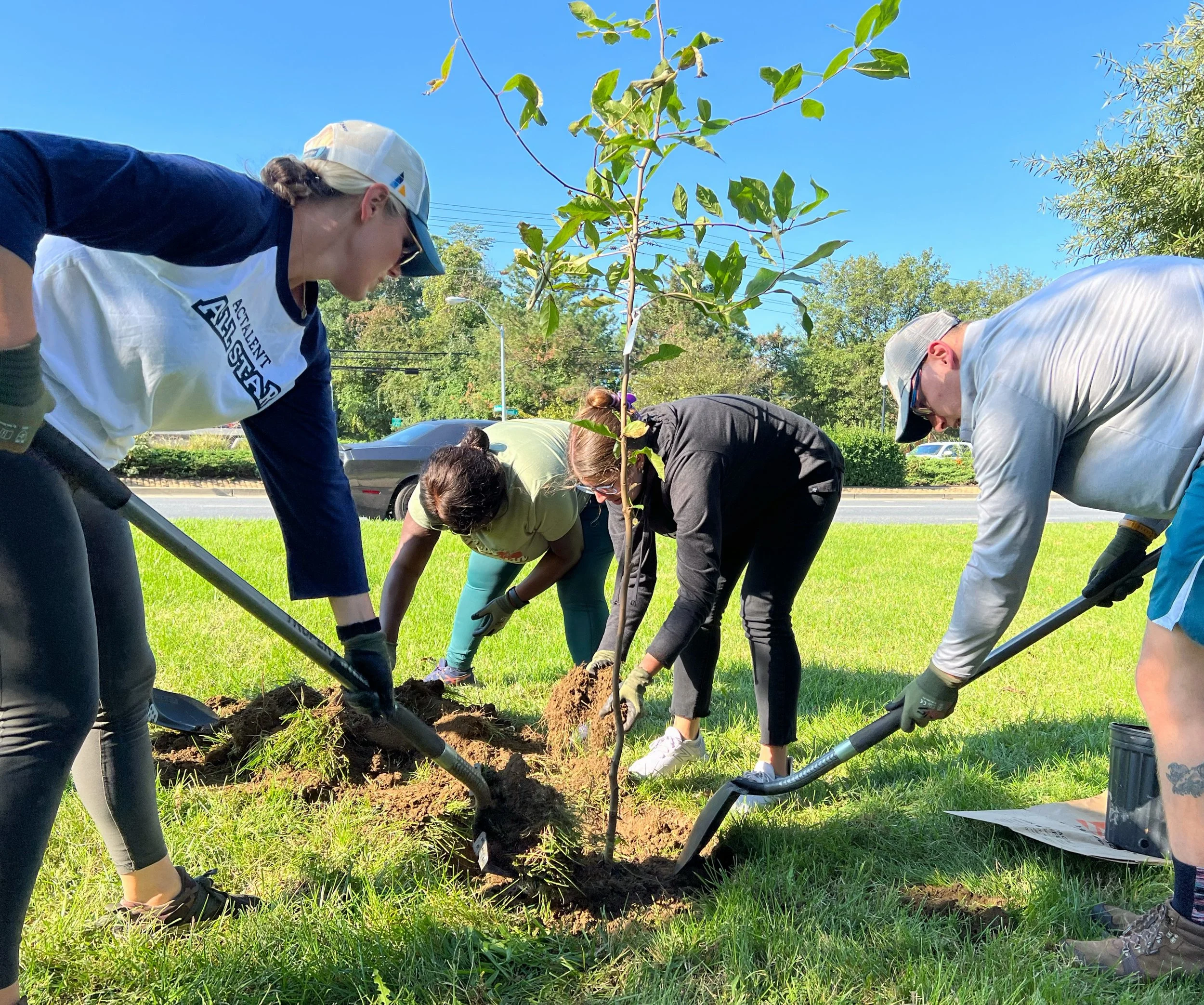5 Reasons to Become a WSA Tree Trooper
If you take a walk through almost any neighborhood in Maryland, you’ll likely notice there’s fewer trees than there used to be. Whether due to development, disease, or storms, our state is losing vital tree canopy fast. In fact, Maryland experience a net loss of over 13,000 acres of tree cover between 2013 and 2018, just in its urban areas (Maryland Forest Technical Study, Chesapeake Conservancy). This loss doesn’t just change our community’s look - it impacts our health, our environment, and our quality of life.
The good news? Planting and caring for trees doesn’t have to be left for foresters and city crews. Everyone can be part of the solution. That’s where Tree Troopers come in!
In response to Anne Arundel County’s significant forest loss in recent years, the Watershed Stewards Academy (WSA) launched the RePlant programs to educate and engage community members on the importance of native trees and expanding our tree canopy.
What’s a tree trooper?
Tree Troopers are the volunteer leaders behind RePlant Anne Arundel and RePlant Annapolis. They plan and implement tree plantings in communities across the County, and help others understand their value. Since 2020, the RePlant programs have trained over 200 Tree Troopers and planted more than 20,000 trees!
(See how one Tree Trooper planted over 100 trees in Annapolis’ Bay Ride community!)
You don’t need to be an expert or have special equipment to become a Tree Trooper - just a willingness to learn and a desire to make a lasting impact. Anyone interested in becoming a Tree Trooper can take WSA’s free, online training. In Fall 2025, WSA will also be hosting a field session for new Tree Troopers to come together and practice the best methods for tree planting and care - making now the perfect time to dive into training!
Tree Troopers are also often the first to hear about other tree programs hosted by WSA throughout the year, such as Groves of Gratitude, an upcoming Fall program that offers low-cost trees to County residents while also raising money for a local community non-profit.
So why should you consider becoming a Tree Trooper? Here are five powerful reasons why this role matters more than ever, and how you can be part of something deeply rooted in positive change.
THE IMPACTS OF WSA TREE TROOPERS
1. Build Stronger Communities
Tree Troopers are encouraged to plan plantings on a variety of properties, including private yards, community-owned land, schools, congregations, and other shared spaces. The program empowers you to lead outreach efforts and host hands-on volunteer events, creating opportunities for neighbors to spend time outdoors and work toward a shared goal. These events not only improve local green spaces, but also strengthen relationships through shared environmental action.
2. Build healthier communities
Tree Troopers often plant trees in urban neighborhoods, or in areas that are experiencing flooding or erosion during storm events. These trees provide shade that cools outdoor spaces and helps counteract the effects of a warming planet. Trees also improve air and water quality across Anne Arundel County, absorbing pollutants, filtering runoff, and reducing erosion that can harm the Chesapeake Bay. These projects create cooler, cleaner, and more resilient communities for everyone.
3. build beautiful communities
Trees transform neighborhoods by adding natural beauty, texture, and seasonal color to yards, streets, and parks. From the bright blooms of Eastern redbuds to the timeless presence of White oaks, there is a tree for every space! Trees can enhance curb appeal, increase property values, and create more welcoming, livable outdoor environments. Tree Troopers help shape these beautiful spaces, encouraging their community members to spend more time outside with friends, families, and neighbors.
4. build environmentally educated communities
Tree Troopers serve as trusted local resources, helping others understand the importance of planting native trees, and how to care for them properly. With access to WSA’s hub of online and printed resources, Tree Troopers are equipped to support sustainable planting and maintenance efforts. By sharing their knowledge and increasing access in their communities to low-cost trees, Tree Troopers build a culture of care for our shared environment.
5. Build engaged communities
New Tree Troopers join a growing network of passionate volunteers committed to protecting our local ecosystems. Once a Tree Trooper and their community realizes how easy it is to make a positive impact through planting or caring for a tree, they might feel empowered to take action in other ways too. WSA offers training programs, education and outreach events, and plant distribution initiatives throughout the year. Through continued involvement, new Tree Troopers, and their community members, can build new skills, connect with and learn from like-minded volunteers, and make a lasting difference in the health of our watershed.
- Faith Waaramaa
WSA Restoration Coordinator











